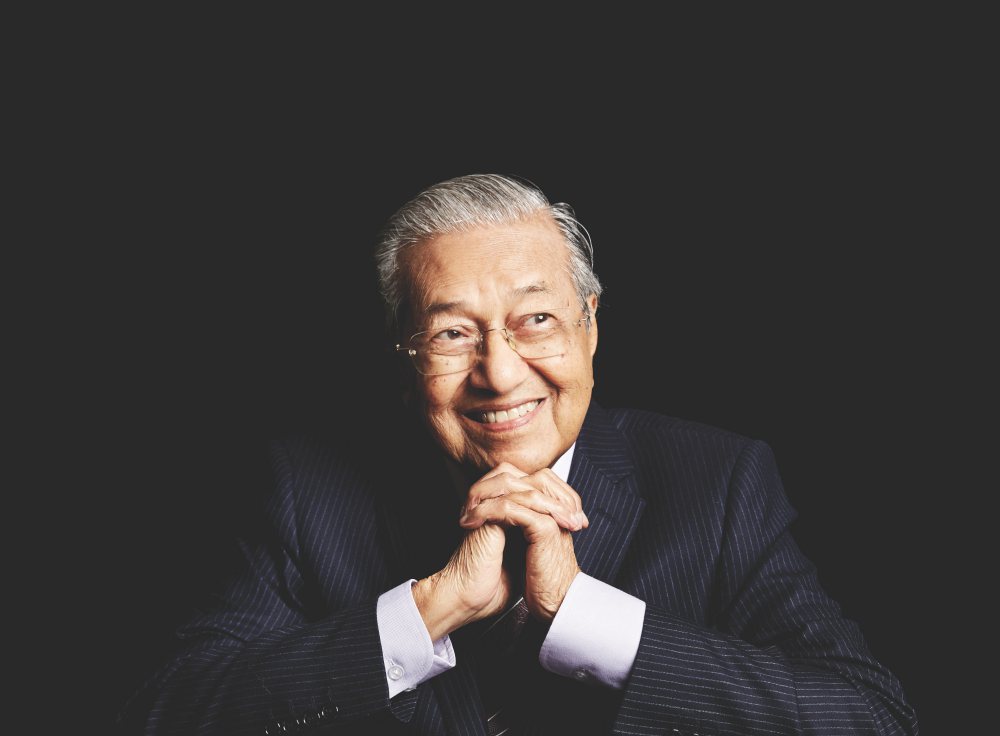Dr. Mahathir Mohamad and the "Revolution" in Malaysia
Transforming Malaysia Through Economic, Political, and Social Reforms
Introduction
Dr. Mahathir Mohamad, Malaysia’s longest-serving Prime Minister (1981–2003 and 2018–2020), is widely regarded as the "Father of Modernization" for his transformative policies that shifted Malaysia from an agrarian economy to an industrialized powerhouse. Often termed the "Mahathir Revolution," his reforms—while not a violent uprising—represented a radical economic and political shift, emphasizing industrialization, infrastructure, and Malay nationalism. His leadership blended visionary ambition with authoritarian pragmatism, reshaping Malaysia’s global standing but sparking controversies over human rights and ethnic policies. As of 2025, at age 100, Mahathir remains an influential figure, critiquing successors and shaping public discourse.[1][2]
Early Life and Rise to Power
Born on July 10, 1925, in Alor Setar, Kedah, Mahathir trained as a physician before entering politics, joining the United Malays National Organisation (UMNO) in 1946. His 1970 book, The Malay Dilemma, argued for affirmative action to uplift the Malay majority, criticizing colonial-era inequalities and sparking his temporary expulsion from UMNO in 1969. He returned in 1972, becoming a Member of Parliament in 1974, Education Minister, and Deputy Prime Minister by 1976. In 1981, he became Prime Minister, serving 22 years before retiring in 2003 and returning at age 92 in 2018.[1][3]
Mahathir’s leadership style combined pragmatism with a focus on "Asian values" like discipline and collectivism, often challenging Western democratic ideals. His global advocacy for developing nations and criticism of "neo-colonialism" positioned Malaysia as a middle power.[2]
The "Mahathir Revolution": Economic Reforms
Mahathir’s first term (1981–2003) is often described as a "quiet revolution" for its rapid shift from an agrarian economy (reliant on tin, rubber, and palm oil) to a manufacturing and technology-driven one. His policies drove GDP growth of 7–9% annually from 1988–1996, doubled per capita income, and made Malaysia the 17th largest trading nation by 2003.[4][1]
Key Economic Reforms
- Look East Policy (1982): Inspired by Japan and South Korea, this policy emphasized industrial discipline and reduced reliance on Western models, attracting Japanese FDI and fostering manufacturing growth.[3]
- Privatization and Deregulation (1983): Privatizing state enterprises like Telekom Malaysia and Tenaga Nasional created the "Malaysia Incorporated" model, boosting efficiency but favoring UMNO-linked bumiputera (Malay) entrepreneurs.[1]
- National Car Project (Proton, 1983): The Proton Saga (1985) symbolized self-reliance, creating jobs and a manufacturing base, though protectionist policies drew criticism.[2]
- Vision 2020 (1991): Aimed to make Malaysia a fully developed nation by 2020 through economic growth, poverty reduction, and ethnic unity via the New Development Policy, replacing the 1971 New Economic Policy.[3]
- Mega-Infrastructure Projects: Projects like the Petronas Twin Towers (1998), Kuala Lumpur International Airport (1998), Putrajaya, the Multimedia Super Corridor (1996), Penang Bridge (1985), and Sepang Formula One circuit transformed urban Malaysia, attracted FDI, and boosted tourism. These strained finances during the 1997 Asian Financial Crisis but cemented Malaysia’s modern image.[4]
- 1997 Asian Financial Crisis Response: Rejecting IMF loans, Mahathir imposed capital controls and pegged the ringgit, stabilizing the economy faster than neighbors like Thailand, earning praise as a bold move against Western financial orthodoxy.[1][2]
By 2003, Malaysia’s manufacturing sector had expanded significantly, literacy rates reached 94%, and life expectancy rose to 73 years, marking its emergence as an "Asian Tiger."[4]
Second Term (2018–2020): Anti-Corruption and Reforms
Mahathir’s return as Prime Minister in 2018, leading the Pakatan Harapan coalition, was historic, making him the world’s oldest elected leader at 92. His focus shifted to anti-corruption, addressing the 1MDB scandal involving former PM Najib Razak, which cost Malaysia $4.5 billion. Key actions included:
- Anti-Corruption Drive: Investigating 1MDB, recovering $600 million in stolen assets, and prosecuting Najib.[5]
- Policy Revisions: Reviewing bumiputera policies for fairness and halting unfeasible projects like the Singapore-Malaysia High-Speed Rail.[2]
- Political Reconciliation: Releasing Anwar Ibrahim from prison, signaling democratic openness, though coalition tensions led to Mahathir’s resignation in 2020.[5]
The 2018 "New Malaysia" vision promised democratic reforms but faltered due to internal coalition disputes, leaving some pledges (e.g., abolishing the death penalty) unfulfilled.[2]
Political Reforms and Controversies
Mahathir’s political reforms centralized power to ensure stability but drew accusations of authoritarianism.
- Reducing Royal Influence (1993): Constitutional amendments stripped sultans of legal immunity, strengthening parliamentary authority after disputes with royalty.[1]
- Judicial and Media Controls: The 1988 judicial crisis saw the sacking of the Lord President, raising concerns over judicial independence. Operation Lalang (1987) detained over 100 activists under the Internal Security Act, suspending newspapers like The Star.[3]
- Reformasi Movement (1998–1999): Sacking Deputy PM Anwar Ibrahim sparked protests demanding transparency. Anwar’s arrest on charges later quashed fueled accusations of political repression.[5]
- Ethnic and Religious Policies: Mahathir’s bumiputera policies addressed post-1969 race riots but deepened ethnic divides. His 2001 "Islamic state" declaration countered PAS but stirred debate.[1]
Globally, Mahathir criticized Western "neo-colonialism" and figures like George Soros, advocating for third-world solidarity and anti-apartheid causes.[3]
Legacy and Criticisms
At 100 (July 2025), Mahathir remains active, blogging and critiquing successors like Anwar Ibrahim. His "revolution" transformed Malaysia into a prosperous, industrialized nation, with a GDP per capita of $13,300 (2023) and thriving industries. However, critics highlight:
- Cronyism: Contracts to UMNO-linked elites fueled perceptions of favoritism.[2]
- Human Rights: Use of the Internal Security Act and media controls suppressed dissent.[5]
- Ethnic Polarization: Bumiputera policies deepened divides, contributing to PAS’s rise.[1]
Vision 2020 fell short due to post-2003 policy reversals, but Malaysia’s global clout endures. Recent X discussions highlight debates on migration post-infrastructure projects and PAS’s influence, reflecting Mahathir’s complex legacy.[6][7]
Conclusion
Dr. Mahathir Mohamad’s "revolution" transformed Malaysia through bold economic reforms, mega-projects, and political centralization. His Look East Policy, Vision 2020, and infrastructure like the Petronas Twin Towers elevated Malaysia to an "Asian Tiger," with GDP growth of 7–9% in the 1990s. His 2018–2020 term tackled corruption but faltered on democratic reforms. While credited with modernization, Mahathir’s legacy is marred by authoritarianism, cronyism, and ethnic divides. At 100, he remains a polarizing figure, with his revolutionary impact shaping Malaysia’s prosperity and challenges in 2025.[1][2][7]
